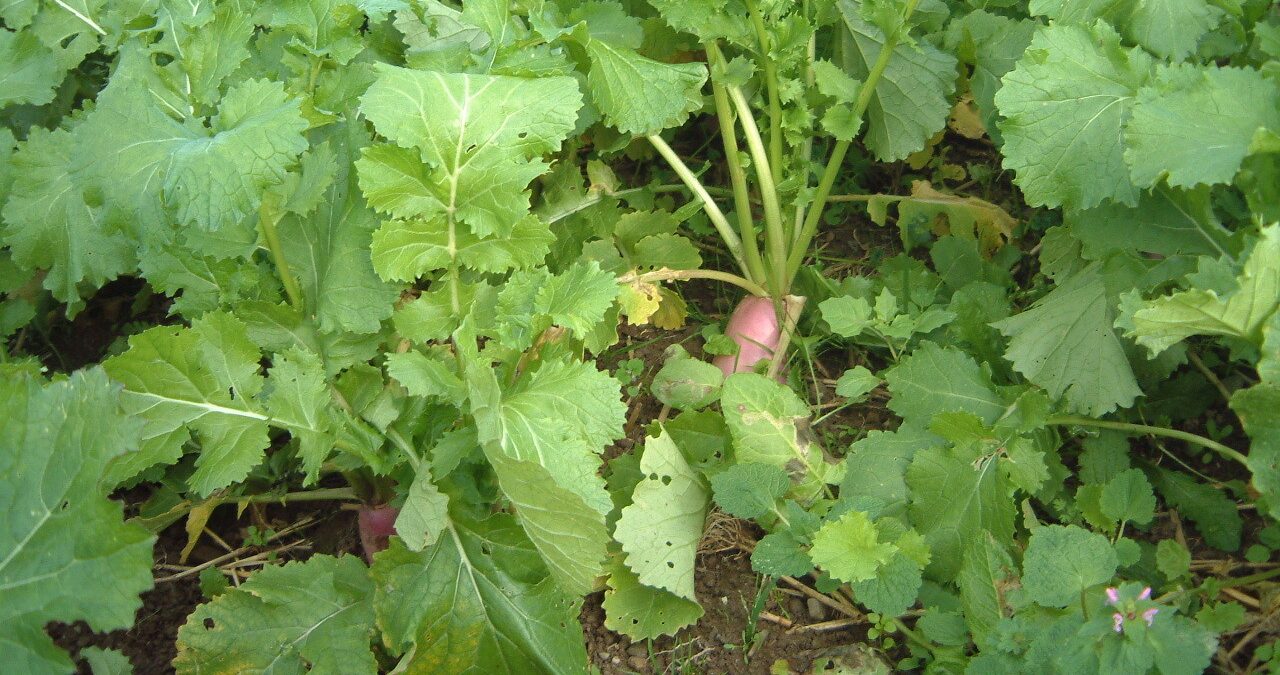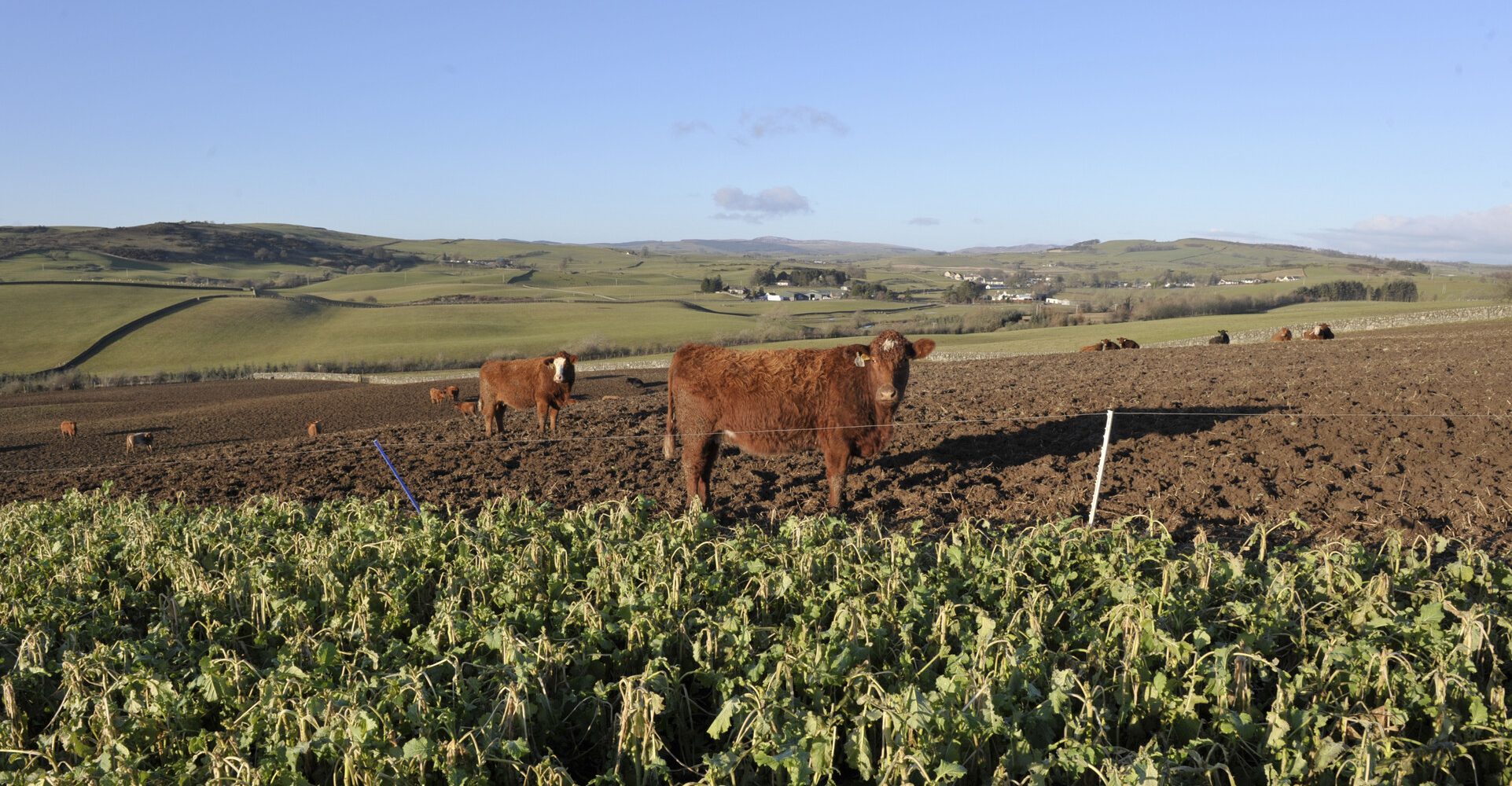Housing animals over winter drives up costs by needing extra feed and labour. To keep these costs down, there are two main options – extend the grazing season longer into the autumn or outwinter stock completely. Whichever path you chose, brassica crops can help and you’ll need to tailor your approach.
Germinal grass and forage seed expert Paul Morgan explains how brassica crops can reduce these costs and what to plant now for quality grazing later in the year.
“First cut generally produced good yields in 2022. However, we’re not seeing the quality we’d typically hope for. If this is true for you, or if you’re in an area prone to drought, brassicas are a brilliant, low-cost option to supplement your silage reserves this winter.”
Pick the right brassica crops
“Start by matching the brassica crop to the grazing window you need to create. It’s too late in the year now for swede and kale, but there’s plenty of time for hybrid brassicas and stubble turnips.
“A hybrid brassica like Redstart offers so much more than forage rape. It’s higher quality, produces higher yields and has a higher protein content. It’s also a very versatile brassica seed – it can flourish in a range of growing conditions.
“Hybrid brassica can be drilled or broadcast from now until 10 September. If planted in mid-July, you should be able to graze it in 10 weeks. So, if you’re wanting to extend the grazing season, it will be ready at the end of September or early October.
“If you drill in the middle of August, growth will be slower due to the reducing daylight hours and warmth, but you’ll have a crop come December or January time – ideal if you’re outwintering animals.
“Stubble turnips are another good option. They have a bigger bulb and are a good source of energy for livestock."
"Stubble turnips can be drilled from the end of July to the middle of August; beyond that, the shorter days and colder temperatures are out of sync with the leaf size, so won’t produce such a good crop.
“As a rule of thumb, we estimate that for every two weeks you wait to drill after 1 August, yields can drop by up to a half.”
Check stocking guidelines
“The table provides a handy reference to the number of livestock each type of brassica supports, and the average feed value provided.”
Animals/ha for 100 days (70% of diet)
| Crop | DM (kg/ha) | DM (%) | ME (MJ/kg) | Cows | Youngstock | Ewes | Finishing lambs |
| Hybrid brassica | 7-10,000 | 12-14 | 10-13 | 11 | 10 | 63 | 49 |
| Forage rape | 4-5,000 | 11-13 | 10-13 | 7 | 6 | 30 | 30 |
| Stubble turnips | 6,500 | 9-12 | 10-13 | 11 | 10 | 63 | 49 |
| Grazing turnips | 4,000 | 10-14 | 10-13 | 9 | 8 | 49 | 38 |
Please note: This table assumes cow liveweight gain 500 kg (adjust upwards for dairy cows), youngstock liveweight gain 0.75 kg/day, 55 kg ewes on maintenance feeding, lamb liveweight gain 200 g/day and dairy cows are restricted to no more than 30% of daily dry matter intake as brassicas to avoid the risk of milk taint.
Looking ahead – plan your brassica grazing
“Brassicas can have a reputation of not being winter hardy due to their fast growth and high dry matter. However, what is really comes down to is the correct management. Given we are talking pennies, rather than pounds per head to grow, planning ahead will protect your crop and your livestock.
Strip grazing
“Strip grazing with electric fences is the best way to use the crop most efficiently and reduce waste. Strips should be long and narrow with the fence moved daily so all animals can access the crop at the same time.
“This also minimises the risk of poaching. Having calculated the grazing area needed each day, don’t offer more as this increases the risk of trampling and crop wastage.
Grazing advice for forage brassica crops
“Introduce livestock to brassicas gradually and with full stomachs. Start with one to two hours per day, increasing daily for seven to 10 days, at which point they can have unrestricted access.
“Allow access to a run-back area and always supplement with hay, haylage or straw to keep fibre intakes up. For cows in milk, no more than 30% of total daily dry matter intake should come from brassicas, rising to 70% for other livestock.
“As always, a water supply is essential. Supplementary minerals, particularly copper, selenium and iodine are also required, given as a bolus or provided as licks/bags in the field.”
Learn more about the different types of brassicas, and how to calculate daily grazing requirements, using our Brassica Growers’ Guide.
Ask for Germinal
Please contact our grass and forage production experts if you want to know more about overseeding pasture or would like advice on choosing the best mixture for your conditions.
William Fleming, Area Sales Manager, Scotland and Northeast England
T: 07971 640428
E: william.fleming@germinal.com
Paul Morgan, Area Sales Manager, Southwest
T: 07713 878069
Harley Brown-Keech, Area Sales Manager
T: 07880 469645



